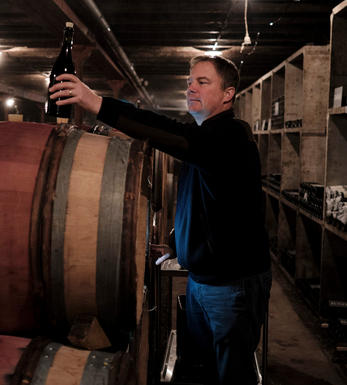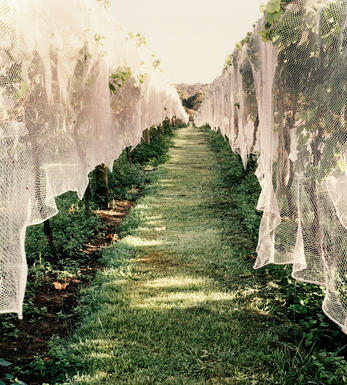
About this WINE

Maison Camille Giroud
Established in 1865, Maison Camille Giroud has a rich heritage rooted in Burgundy’s winemaking tradition. Initially a specialist négociant, they sourced wines from esteemed growers across the renowned Côte d’Or region, ageing them meticulously in their cellars for decades to achieve peak maturity.
In 2001, a consortium, including Napa Valley winery owner Ann Colgin and wine investors, took over, aiming to blend tradition with modern techniques and a terroir-driven approach. This led to innovations, like wooden presses and open vats, under the dynamic winemaker David Croix.
Most wines continued to be crafted from carefully selected grapes, many from old vines. Their commitment to natural winemaking practices, including native yeast fermentation and minimal intervention, set them apart.
In 2016, Carel Voorhuis continued the legacy of crafting pure, terroir-driven wines, maintaining Maison Camille Giroud’s reputation for excellence in Burgundy.

Mercurey
Mercurey is the largest appellation of the Côte Chalonnaise region, and produces both red and white wine, although red does tend to dominate with almost 80% production coming from Pinot Noir grapes. The remaining white wine is made predominantly from Chardonnay.
Named after the Roman messenger deity of trade, the appellation is generally regarded as the most widely recognised of the five villages, indeed for a while the Côte Chalonnaise was referred to as the ‘Région de Mercurey,’ and it has the largest production by far: over half of all wine from the Côte Chalonnaise is from Mercurey.
No Grand Cru vineyards lie within the Côte Chalonnaise, however Mercurey produces wine from 32 Premier Cru vineyards, accounting for over a fifth of its vine-growing land. Mercurey reds are generally regarded as strong, full-bodied and exhibiting notes of red fruits such as cherries, or violets, and are very well-suited to red meats such as beef, or stews. The rarer whites on the other hand are known for their minerality, and hints of slate and apple.

Pinot Noir
Pinot Noir is probably the most frustrating, and at times infuriating, wine grape in the world. However when it is successful, it can produce some of the most sublime wines known to man. This thin-skinned grape which grows in small, tight bunches performs well on well-drained, deepish limestone based subsoils as are found on Burgundy's Côte d'Or.
Pinot Noir is more susceptible than other varieties to over cropping - concentration and varietal character disappear rapidly if yields are excessive and yields as little as 25hl/ha are the norm for some climats of the Côte d`Or.
Because of the thinness of the skins, Pinot Noir wines are lighter in colour, body and tannins. However the best wines have grip, complexity and an intensity of fruit seldom found in wine from other grapes. Young Pinot Noir can smell almost sweet, redolent with freshly crushed raspberries, cherries and redcurrants. When mature, the best wines develop a sensuous, silky mouth feel with the fruit flavours deepening and gamey "sous-bois" nuances emerging.
The best examples are still found in Burgundy, although Pinot Noir`s key role in Champagne should not be forgotten. It is grown throughout the world with notable success in the Carneros and Russian River Valley districts of California, and the Martinborough and Central Otago regions of New Zealand.



Buying options
Add to wishlist
Description
Clos Voyens sits high on the hill in the northeast corner of the village, with a south-westerly exposure; there’s more limestone up here. The wine is bright and lively, without any hint of rusticity. What is striking about Carel’s Mercurey is how he preserves a sense of delicacy: there’s even a touch of finesse on the finish. Drink 2022-2029.
wine at a glance
Delivery and quality guarantee